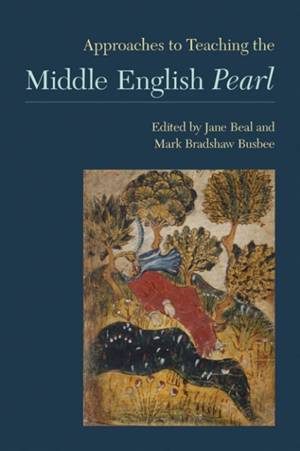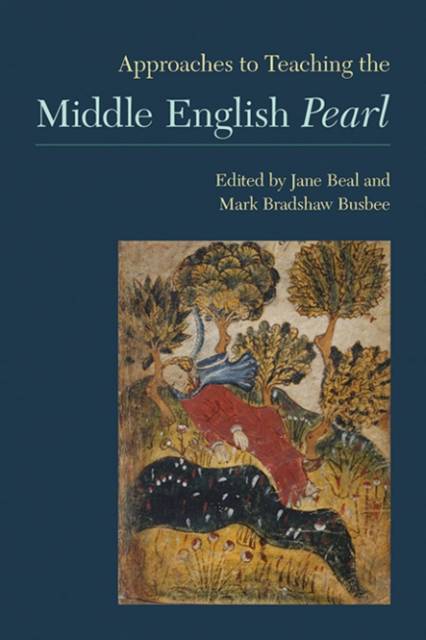
- Afhalen na 1 uur in een winkel met voorraad
- Gratis thuislevering in België vanaf € 30
- Ruim aanbod met 7 miljoen producten
- Afhalen na 1 uur in een winkel met voorraad
- Gratis thuislevering in België vanaf € 30
- Ruim aanbod met 7 miljoen producten
Zoeken
Approaches to Teaching the Middle English Pearl
€ 41,95
+ 83 punten
Omschrijving
The moving, richly allegorical poem Pearl was likely written by the anonymous poet who also penned Sir Gawain and the Green Knight. In it, a man in a garden, grieving the loss of a beloved pearl, dreams of the Pearl-Maiden, who appears across a stream. She teaches him the nature of innocence, God's grace, meekness, and purity. Though granted a vision of the New Jerusalem by the Pearl-Maiden, the dreamer is pained to discover that he cannot cross the stream himself and join her in bliss--at least not yet. This extraordinary poem is a door into late medieval poetics and Catholic piety.
Part 1 of this volume, Materials, introduces instructors to the many resources available for teaching the canonical yet challenging Pearl, including editions, translations, and scholarship on the poem as well as its historical context. The essays in part 2, Approaches, offer instructors tools for introducing students to critical issues associated with the poem, such as its authorship, sources and analogues, structure and language, and relation to other works of its time. Contributors draw on interdisciplinary approaches to outline ways of teaching Pearl in a variety of classroom contexts.
Part 1 of this volume, Materials, introduces instructors to the many resources available for teaching the canonical yet challenging Pearl, including editions, translations, and scholarship on the poem as well as its historical context. The essays in part 2, Approaches, offer instructors tools for introducing students to critical issues associated with the poem, such as its authorship, sources and analogues, structure and language, and relation to other works of its time. Contributors draw on interdisciplinary approaches to outline ways of teaching Pearl in a variety of classroom contexts.
Specificaties
Betrokkenen
- Uitgeverij:
Inhoud
- Aantal bladzijden:
- 262
- Taal:
- Engels
- Reeks:
- Reeksnummer:
- nr. 143
Eigenschappen
- Productcode (EAN):
- 9781603292924
- Verschijningsdatum:
- 1/08/2017
- Uitvoering:
- Paperback
- Formaat:
- Trade paperback (VS)
- Afmetingen:
- 150 mm x 226 mm
- Gewicht:
- 399 g

Alleen bij Standaard Boekhandel
+ 83 punten op je klantenkaart van Standaard Boekhandel
Beoordelingen
We publiceren alleen reviews die voldoen aan de voorwaarden voor reviews. Bekijk onze voorwaarden voor reviews.







